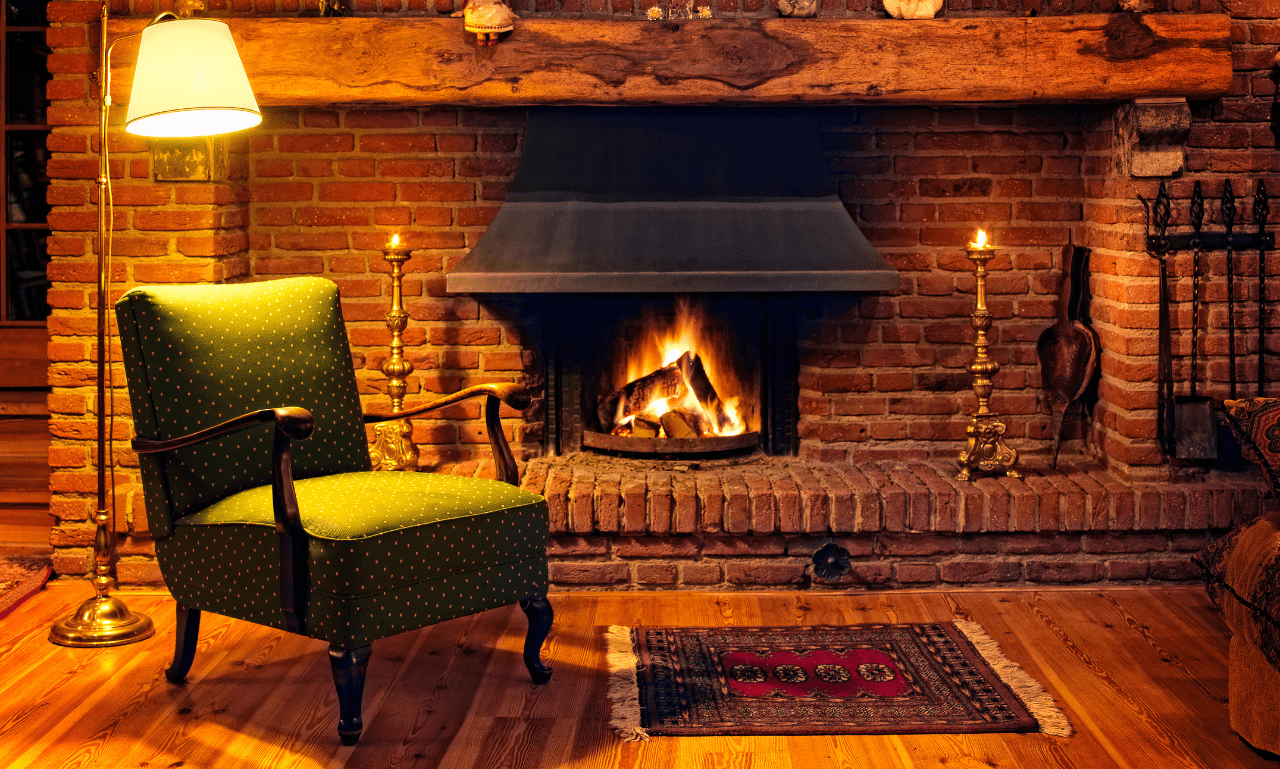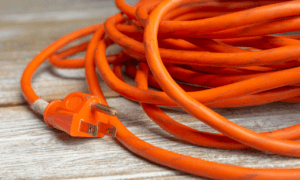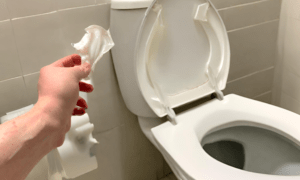Introduction
The Importance of Efficient Home Heating
Efficient home heating is essential for maintaining comfort during the colder months while also keeping energy costs in check. When your heating system runs optimally, you can enjoy a cozy and warm living space without breaking the bank. In this guide, we will explore various DIY approaches to enhance your home heating efficiency.
DIY Solutions for Warming Your Home and Reducing Energy Costs
The do-it-yourself (DIY) approach to home heating provides practical and cost-effective solutions. You don’t need to be a professional to implement these strategies. By the end of this article, you’ll be equipped with the knowledge and skills to create a warm and energy-efficient home on your terms.

Preparing Your Home for Winter
Insulation and Weatherization: A Strong Foundation for Efficient Heating
Effective home heating begins with insulation and weatherization. This section will delve into the importance of proper insulation and sealing gaps in your home’s structure. From attic insulation to weatherstripping windows and doors, you’ll discover how to create a well-insulated barrier against the cold, ensuring your heating system doesn’t work harder than it needs to.
Insulation: The First Line of Defense Against Cold
Proper insulation is the cornerstone of efficient home heating. We’ll discuss the different types of insulation, such as fiberglass, cellulose, and spray foam, and guide you in choosing the right one for your needs. Additionally, you’ll learn how to assess your current insulation levels and identify areas that may need improvement.
Attic Insulation: A Vital Step
One crucial area that often requires attention is the attic. We’ll explore the significance of insulating your attic to prevent warm air from escaping through your roof. Detailed steps for installing or upgrading attic insulation will be provided, ensuring your home remains warm while reducing heating costs.
Weatherstripping Windows and Doors: Keeping Chilly Drafts at Bay
Drafty windows and doors can be a significant source of heat loss. We’ll explain the importance of weatherstripping and share practical techniques for sealing gaps around windows and doors effectively. By preventing cold drafts from infiltrating your home, you’ll maintain a comfortable indoor temperature without excessive heating demands.
Sealing Gaps and Cracks: Keeping the Cold Out and the Warmth In
Gaps and cracks in your home’s envelope can undermine your heating efforts. This section will provide a comprehensive guide to locating these problem areas. Using simple tools and techniques, you can identify gaps around windows, doors, electrical outlets, and pipes. We’ll also share how to seal these gaps using caulk, weatherstripping, and other materials, ensuring a more energy-efficient and comfortable living space.
By addressing insulation and weatherization, you’ll set a strong foundation for efficient home heating, reduce energy waste, and enjoy a cozier and more cost-effective winter. Proper insulation and gap sealing not only help in maintaining warmth but also contribute to environmental sustainability by minimizing energy consumption.

DIY Heating Methods and Upgrades
Space Heaters: Affordable and Portable Heating Solutions
Space heaters are versatile heating devices designed to warm specific areas efficiently. They come in various types, each with its own set of advantages and use cases.
Types of Space Heaters:
- Ceramic Heaters: These heaters use ceramic plates and a fan to distribute warm air quickly. They are known for their energy efficiency and safety features, such as cool-to-the-touch exteriors.
- Oil-Filled Radiators: Oil-filled heaters use electricity to heat oil, which then radiates heat. They are ideal for maintaining a steady, consistent temperature.
- Infrared Heaters: Infrared space heaters emit infrared radiation, which heats objects directly. They are excellent for spot heating and are often used in outdoor spaces.
Using Space Heaters Effectively:
- Placement: Position the space heater in the room where you need extra warmth. Ensure it’s at least three feet away from flammable materials and has proper ventilation.
- Safety Features: Modern space heaters come with safety features such as tip-over switches and overheating protection. Make sure your space heater has these features for added safety.
- Energy Efficiency: Choose an energy-efficient space heater with adjustable heat settings to minimize energy consumption.
Programmable Thermostats: Smart Control for Energy Savings
Programmable thermostats are innovative devices that enable you to take control of your home’s heating system with precision. They offer a range of features to help you save on energy costs and maintain a comfortable environment.
Choosing and Installing a Programmable Thermostat:
- Compatibility: Select a thermostat that is compatible with your heating system. Common types include line-voltage and low-voltage thermostats.
- Installation: Installing a programmable thermostat is a straightforward DIY task. Just follow the manufacturer’s instructions, and if you’re unsure, consult a professional for installation.
- Programming: Programmable thermostats allow you to set heating schedules based on your daily routine. Adjust temperatures for different times of day, such as lowering the heat while you’re at work or asleep and raising it when you’re at home.
Benefits of Programmable Thermostats:
- Energy Savings: By reducing heating when it’s not needed, programmable thermostats can lead to significant energy savings, ultimately lowering your heating bills.
- Consistent Comfort: Enjoy a consistent and comfortable temperature in your home, customized to your preferences.
- Remote Control: Some smart thermostats can be controlled remotely via smartphone apps, allowing you to adjust settings even when you’re away from home.
Incorporating space heaters and programmable thermostats into your DIY home heating strategy can significantly enhance your comfort and energy efficiency. By understanding the different types of space heaters, using them effectively, and utilizing programmable thermostats, you can create a warm and cost-effective living environment.

Alternative and Eco-Friendly Heating Options
Wood Stoves and Pellet Stoves: Cozy and Sustainable Choices
Wood stoves and pellet stoves provide a charming and sustainable alternative to conventional heating systems. These options not only offer efficient heating but also add a touch of rustic charm to your home. Here, we’ll delve into the basics of selecting, installing, and operating these stoves for optimal warmth and comfort.
Selecting the Right Wood or Pellet Stove
Choosing the right stove is the first step. We’ll guide you through the factors to consider, such as stove size, heating capacity, and energy efficiency. By selecting the appropriate stove for your space, you can ensure efficient heating without excess energy consumption.
Installation and Ventilation
Proper installation and ventilation are crucial for the safe operation of wood and pellet stoves. We’ll provide a step-by-step guide on how to install your stove, including considerations for the location, chimney installation, and safety measures. By following these instructions, you can enjoy the warmth of your stove safely.
Operating and Maintaining Your Stove
Effectively operating and maintaining your stove is essential for long-term performance. We’ll cover the fundamentals of lighting the fire, controlling heat output, and maintaining the stove, including cleaning and ash disposal. Regular maintenance ensures that your wood or pellet stove operates efficiently and provides a cozy atmosphere.
Solar Heating: Harnessing the Sun’s Energy for Warmth
Solar heating is an eco-friendly and cost-effective method to warm your home. By harnessing the sun’s energy, you can reduce your reliance on conventional heating systems and lower your carbon footprint. In this section, we’ll explore various solar heating systems and how to integrate them into your home.
Passive Solar Design
Passive solar design involves using the sun’s energy to naturally heat your home. We’ll explain the principles of passive solar design, including strategic positioning of windows, thermal mass, and insulation. By incorporating these design elements, you can maximize solar heat gain and minimize energy usage.
Solar Thermal Panels
Solar thermal panels, also known as solar collectors, are a practical way to harness solar energy for heating water or air. We’ll discuss the types of solar thermal panels available and their applications. Whether you’re interested in solar water heaters or air heating systems, you’ll learn how to choose and install the right solution for your needs.
Supplemental Solar Heating
Supplemental solar heating systems work in tandem with your existing heating system. We’ll explain how to integrate solar heating into your home, including connecting solar collectors to your heating system and controlling heat distribution. This eco-friendly addition reduces your reliance on traditional heating methods and saves on energy costs.
By incorporating wood stoves, pellet stoves, or solar heating into your home, you can enjoy efficient, eco-friendly, and cost-effective heating while reducing your environmental impact. These alternative options not only provide warmth but also contribute to a more sustainable and comfortable living environment.

Maintenance and Safety Tips
Regular Maintenance: Extending the Lifespan of Your Heating System
Proper maintenance is key to extending the lifespan and efficiency of your heating system. Neglecting maintenance can lead to reduced performance, higher energy bills, and potentially costly repairs. Here’s a comprehensive maintenance checklist to keep your heating system in top shape:
- Filter Replacement: Regularly change or clean the air filters in your heating system. Clogged filters can restrict airflow, making your system work harder and less efficiently.
- Duct Cleaning: Periodically inspect and clean your heating system’s ductwork. Dust and debris can accumulate, reducing the system’s efficiency and indoor air quality.
- Thermostat Calibration: Ensure your thermostat is accurately calibrated to maintain the desired temperature. A poorly calibrated thermostat can cause temperature imbalances and energy waste.
- Lubrication: Some heating systems, such as furnaces, have moving parts that require lubrication. Regularly lubricate these parts to prevent excessive wear and tear.
- Check for Leaks: Inspect your heating system for any signs of leaks or unusual noises. Addressing these issues promptly can prevent further damage and ensure safe operation.
- Annual Professional Inspections: Schedule an annual inspection by a qualified HVAC technician. They can identify and address any potential issues, ensuring your heating system is running efficiently and safely.
Carbon Monoxide Detectors and Safety Precautions: Ensuring a Safe Home
Safety is paramount when it comes to home heating. Your heating system, if not properly maintained, can pose risks, including carbon monoxide leaks. Here’s what you need to know to keep your home safe:
- Install Carbon Monoxide Detectors: Carbon monoxide (CO) is a colorless, odorless gas that can be produced by heating systems. Install CO detectors in key areas of your home, particularly near bedrooms. Test them regularly and replace batteries as needed.
- Clear Ventilation Paths: Ensure that vents and exhaust pipes for your heating system are free from obstructions, such as debris or snow accumulation. Proper ventilation is crucial for the safe operation of your heating system.
- Professional Inspections: In addition to regular maintenance, schedule annual professional inspections to check for CO leaks and other safety issues. Technicians can identify and fix potential hazards.
- Know the Signs: Familiarize yourself with the symptoms of CO poisoning, including headaches, dizziness, nausea, and confusion. If you or your family experience these symptoms and suspect CO exposure, leave your home immediately and seek medical attention.
By following these safety precautions and maintenance tips, you’ll not only create a warm and comfortable home but also ensure the safety and well-being of your household. Safety should always be a top priority when it comes to your home heating system.
Conclusion
Achieving a Warm and Comfortable Home While Being Kind to Your Wallet
In conclusion, efficient DIY home heating is attainable with the right strategies and knowledge. By preparing your home for winter, implementing DIY heating methods and upgrades, exploring eco-friendly options, and prioritizing maintenance and safety, you can create a warm and comfortable home while saving money.
Embracing DIY Home Heating for a Cozy and Cost-Effective Winter
Embracing DIY home heating not only ensures comfort during the colder seasons but also allows you to take control of your energy costs. Whether you opt for insulation improvements, space heaters, or eco-friendly alternatives, the DIY approach empowers you to stay cozy and keep more money in your wallet during the winter months.
In the article Can You Put Plates in the Oven? Oven-Safe Dinnerware Explained, We’ll explore the suitability of various types of dinnerware for oven use.















